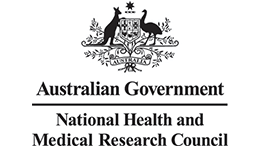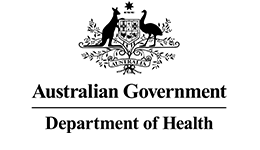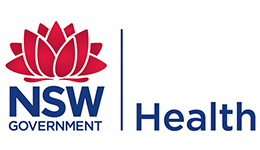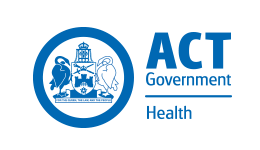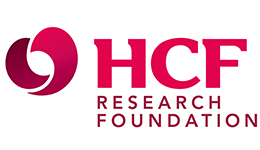Communicating prevention: approaches to framing and storytelling

Status completed
Start Date
End Date
A large proportion of the health promotion and disease prevention workforce remains invisible to the public. Yet without these people we would not have achieved the huge gains made over the past 25 years.
Making the role of healthy public policy more widely known and understood could advance prevention further. People could demand, or at least expect, preventive public policies to be present – the way they expect high quality health care.
Introduction
This broad-ranging and ambitious program of work had a number of key streams of work, including communicating the science of prevention, media framing of prevention, communicating the impact of prevention, and, engaging the public in prevention research.
From this project we have learned that the science that underpins prevention has ‘holding power’ for the public – they have interest and they ‘get it’ and this may help create new constituencies of support and additional legitimacy for prevention. We have learned that disciplines outside of health see new ways for us to communicate prevention. We have learned that professionals outside of health see commercial opportunities in products that create greater public understanding of healthy public policy.
Featured project resources
-
‘Soft power’ for prevention comes from engaging the public with prevention as a science
Resource category:Podcasts
Date -
How can citizen science help public health research?
Resource category:Findings Brief
Date
Featured project news
-
When people are stopped from telling their story
News Category: Prevention Centre NewsDate -
How can citizens contribute to the science and practice of public health?
News Category: Prevention Centre NewsDate -
Engaging citizens in monitoring workplace support for breastfeeding
News Category: Prevention Centre NewsDate
About
Communicating prevention – approaches to prevention framing and story telling
Project titleWhat is the issue?
The public image of disease prevention often emphasises the importance of individual behaviour change, but it makes it look spontaneous and the result of personal willpower only.
This public image underestimates the role of public policy in creating situations and incentives to enable behaviour change, for example, by making fresh food affordable and cigarettes expensive, or by having policies in schools and neighbourhoods that encourage physical activity. It also fails to represent public policies in housing, employment or education that directly affect people’s social and economic resources and hence their wellbeing.
A large proportion of the health promotion and disease prevention workforce – the people who research and implement these policies – remains invisible to the public. Yet without these people we would not have achieved the huge gains made over the past 25 years. Making the role of healthy public policy more widely known and understood could advance prevention further. People could demand, or at least expect, preventive public policies to be present – the way they expect high quality health care.
How did the project address the issue?
This broad-ranging and ambitious program of work had a number of key streams of work. We began by conducting interviews with a range of key stakeholders (including those who were supportive of policy interventions for prevention, as well as political conservatives and critics) to explore issues in communicating prevention and to open up opportunities for change.
Communicating the science of prevention
We forged a partnership with the Australian National Centre for Public Awareness of Science, to set up a suite of internship projects to explore different approaches to communicating the science of prevention. This resulted in the development and testing of a number products, including: 1) a prototype interactive exhibit at a national science museum, designed to engage community members with the social determinants of health outcomes; 2) Life in the Herd , a 7-part series on population health science as part of a popular, ongoing science podcast show; 3) a set of reframing strategies for managing ‘nanny state’ criticisms of policy interventions, and 4) a prototype for a computer game Health Minister for a Day to illustrate the reach and effect of healthy public policies.
Media framing of prevention
We conducted research on media framing of issues related to prevention, in order to understand both the existing landscape of media framing literature, through scoping reviews of existing research on framing of chronic diseases and policies to address these, as well as an examination of media framing of the Sydney Lockout laws. We also worked with marketing researchers at Macquarie University to scope out the social media landscape in public health (the actors, topics and change in the last 10 years).
Communicating the impact of prevention
We explored the use of analogy to communicate the benefits of public health policies by contrasting them with the benefits of pharmaceutical interventions. This resulted in the development and preliminary evaluation of a suite of analogies demonstrating that the effect size population health interventions can be as good as or better than medications. We tested initial f public reactions to these analogies via online survey methods. We undertook a literature review of how neuroscience methods are being used to test public receptivity to media messaging.
Engaging the public in prevention research
We explored the potential of ‘citizen science’ approaches for engaging the public in mapping the distribution of healthy public policies across Australia. We partnered with The Australian Breastfeeding Association and South Western Sydney Local Health District to conduct a pilot study in which members of the public were involved in using their smartphones to photograph and record information on workplace support for breastfeeding.
Relevance for practice
Most cases for prevention rely on a rational appeal to the ‘business case’ – that is, they push the idea that prevention is good value for money. It is. But it’s been that way for decades and still the investment in prevention by the health sector is proportionately low. Our work is proving that there are other ways to ‘sell’ prevention – by making it fun, interesting and more immediately visible in people’s lives.
What were the outcomes?
We have learned that the science that underpins prevention has ‘holding power’ for the public – they have interest and they ‘get it’ and this may help create new constituencies of support and additional legitimacy for prevention. We’ve learned that disciplines outside of health (e.g., computing, marketing, philosophy of science) see new ways for us to communicate prevention. We’ve learned that professionals outside of health (e.g., media, finance) see commercial opportunities in products that create greater public understanding of healthy public policy. These outcomes bode for well for mainstreaming prevention and integrating it into everyday expectations of what a good life for everybody should be.
The partnerships and expertise developed so far in citizen science have helped create and launch a new university-wide capacity in citizen science at the University of Sydney with the possibility of new funding streams. We hope to build on this for future work.
News and media
-
When people are stopped from telling their story
News Category: Prevention Centre NewsDate -
How can citizens contribute to the science and practice of public health?
News Category: Prevention Centre NewsDate -
Engaging citizens in monitoring workplace support for breastfeeding
News Category: Prevention Centre NewsDate -
Internships to break new ground in communicating prevention
News Category: Prevention Centre NewsDate -
Engaging the bystanders of public health
News Category: Prevention Centre NewsDate
Other news and media
Blogs
The Conversation, Life in a herd – and why in health watching symptoms is easy, but finding causes is hard
MJA Insight, 5 November 2018: Rowbotham S, Hawe P. Making the most of citizen science.
The Conversation, 10 March 2016: We should broaden our view of science if it’s to help make good public policy
Podcasts
- The Wholesome Show: Life in a herd podcast series
- The Wholesome Show: A brief history of the nanny state critique!
Resources
-
‘Soft power’ for prevention comes from engaging the public with prevention as a science
Resource category:Podcasts
Date -
How can citizen science help public health research?
Resource category:Findings Brief
Date
Other resources
Presentations
- Marks, L. Breastfeeding at work: a failed citizen science pilot project illustrates issues in public health ethics. Sydney School of Public Health Research Showcase, University of Sydney, 30 July 2019
- Marks, L. What could citizen science do for public health? Sydney School of Public Health Research Showcase, University of Sydney, 30 July 2019
- Hawe P. Public intellectuals and citizen scientists: new opportunities for promoting engagement in public health. Australian National Prevention Conference, 2-4 May 2018, Sydney
- Marks L, Rowbotham S, Lamberts R, Hawe P. Can neuroimaging be used to enhance communication in public health? Emerging Health Policy Conference. Menzies Centre for Health Policy University of Sydney, 26 July 2018
- Rowbotham S, Hawe P, McKinnon M, Lamberts R. Leach J. Exploring the Potential Of Citizen Science Approaches in Public Health. Australian Citizen Science Conference . Adelaide 9 February 2018
- McKinnon M, Hawe P, Beck A, Grant W, Hoepner J, O’Connell C. Building public understanding of population health science: insights from a unique collaboration . Public Understanding of Science and Technology Conference. Dunedin NZ 4-6 April
- Hawe P. Towards a science of equitable solutions: Harnessing the voice and interests of citizen scientists. World Congress on Public Health. 4 April 2017. Melbourne.
- Hawe P. It’s not just about evidence. Empowering communities. Communities in Control Workshop. 10 June 2016, Lancaster, UK.
- Barakat T. Corrupting the nanny state? Content analysis. Lock out laws. Emerging Health Policy Research Conference; Menzies Centre for Health Policy. 13 July 2016, Sydney.
- Rowbotham S. Media framing of preventative health messages: a scoping review. Emerging Health Policy Research Conference; Menzies Centre for Health Policy. 13 July 2016, Sydney.
- Hawe P. An image makeover for the nanny state? Communicating the science that underpins public policy in disease prevention. Centre for the Public Awareness of Science; 22 August 2016, Canberra.
Publications
People
Lead investigators
Project team
-
Adjunct Associate Professor Jo Mitchell Adjunct Associate Professor Jo Mitchell has finished working with the Prevention Centre.
The Australian Prevention Partnership Centre -
Leah Marks
The University of Sydney -
Dr Samantha Rowbotham
The University of Sydney -
Dr Vicki Arbes Dr Vicki Arbes has finished working with the Prevention Centre.
Consultant -
Dr Thomas Astell-Burt Dr Thomas Astell-Burt has finished working with the Prevention Centre.
University of Wollongong -
Dr Becky Freeman Dr Becky Freeman has finished working with the Prevention Centre.
University of Sydney -
Professor Brian Head Professor Brian Head has finished working with the Prevention Centre.
University of Queensland -
Dr Rod Lamberts Dr Rod Lamberts has finished working with the Prevention Centre.
Australian National Centre for the Public Awareness of Science -
Professor Joan Leach Professor Joan Leach has finished working with the Prevention Centre.
Australian National Centre for the Public Awareness of Science -
Dr Merryn McKinnon Dr Merryn McKinnon has finished working with the Prevention Centre.
Australian National Centre for the Public Awareness of Science -
Dr Helen Siuki Dr Helen Siuki has finished working with the Prevention Centre.
Macquarie University -
Ms Chedia Dhaoui Ms Chedia Dhaoui has finished working with the Prevention Centre.
Macquarie University -
Dr Jacqui Hoepner Dr Jacqui Hoepner has finished working with the Prevention Centre.
Centre for Public Awareness of Science (ANU) -
Dr Will Grant Dr Will Grant has finished working with the Prevention Centre.
Centre for Public Awareness of Science (ANU) -
A/Prof Cynthia Webster A/Prof Cynthia Webster has finished working with the Prevention Centre.
Macquarie University -
Tala Barakat Tala Barakat has finished working with the Prevention Centre.










